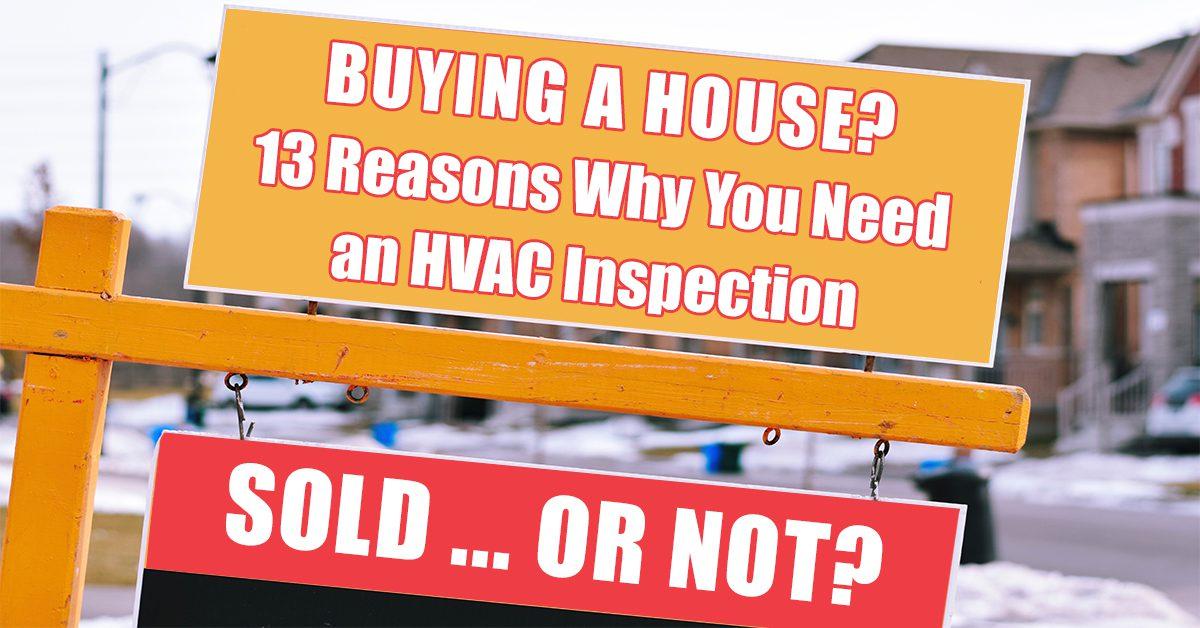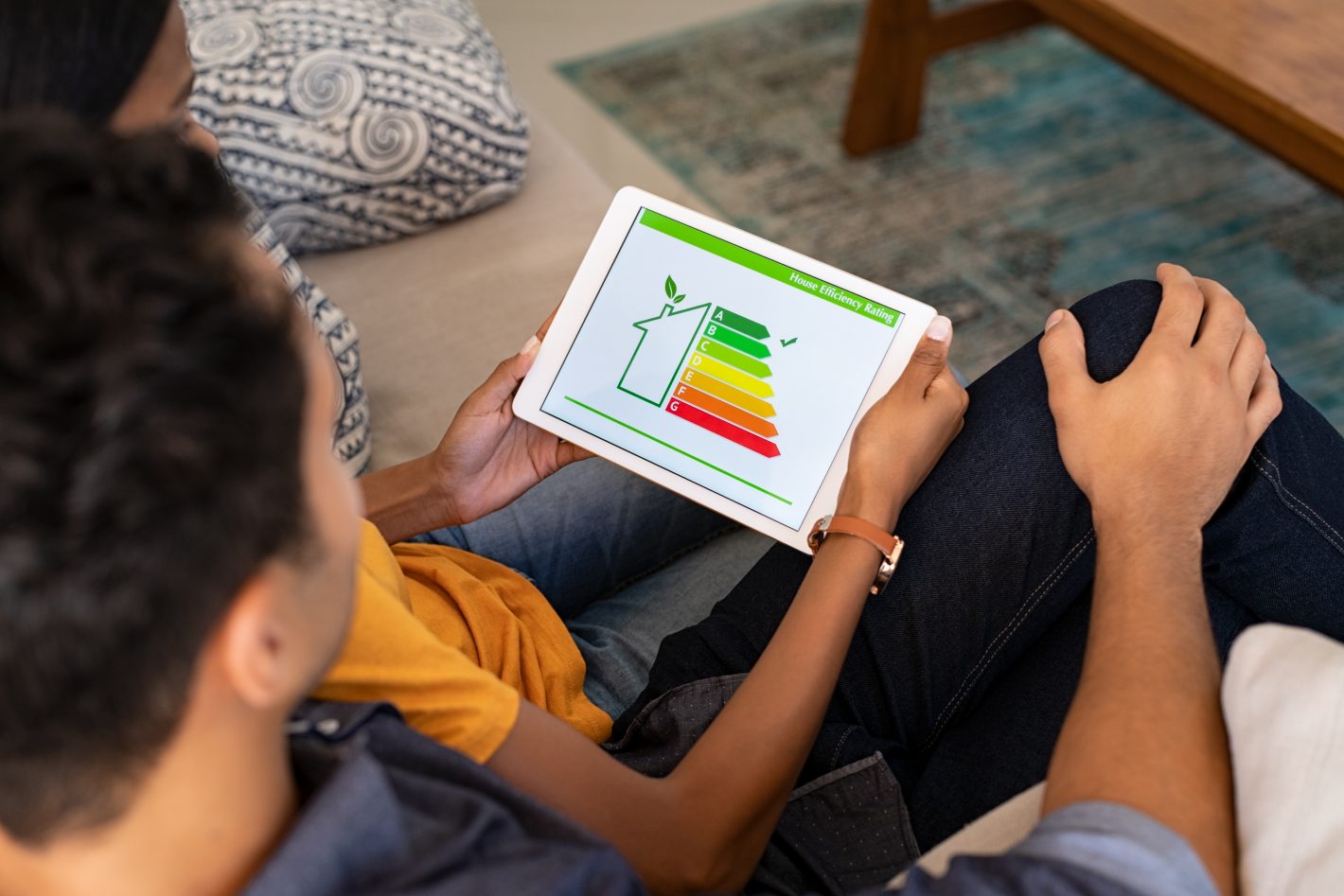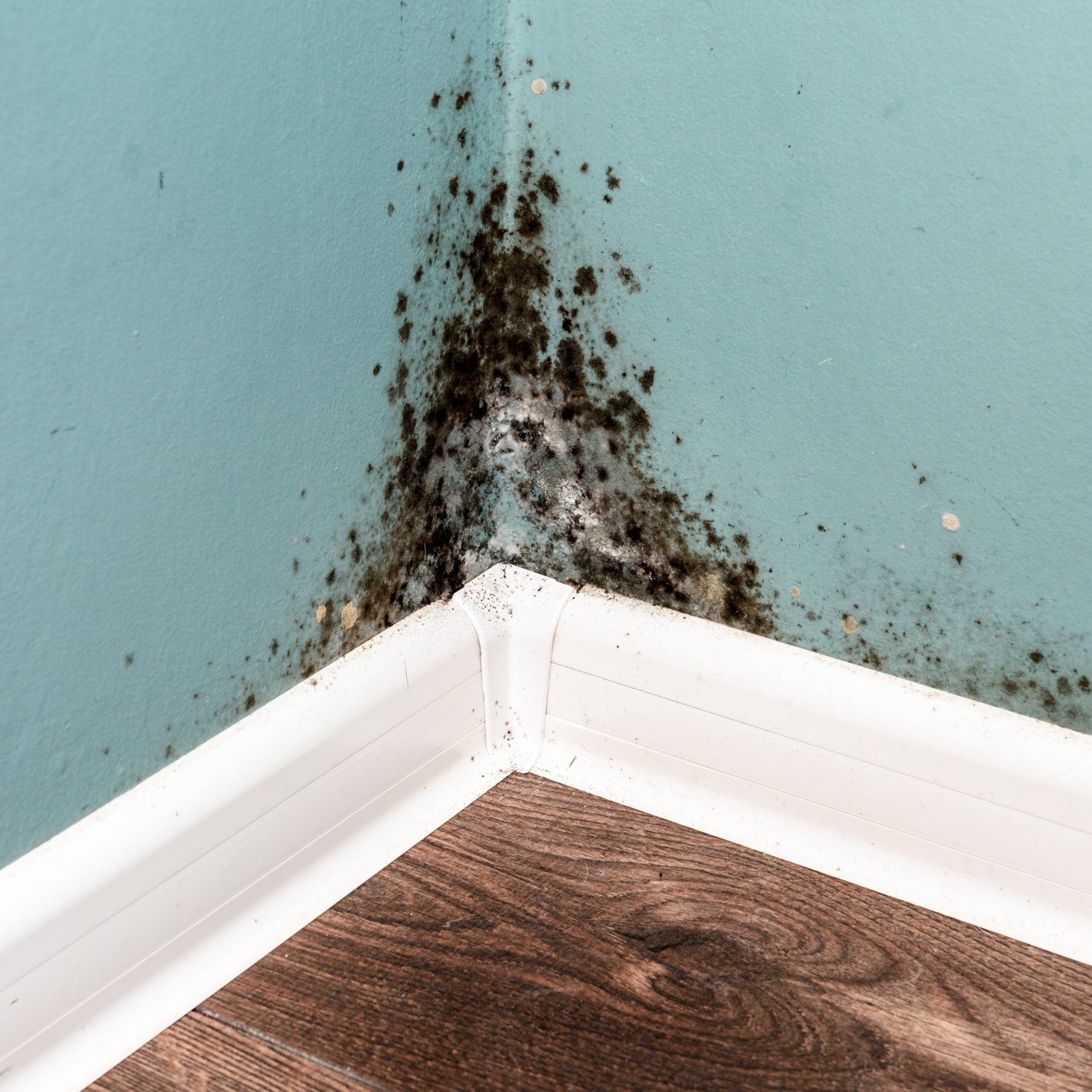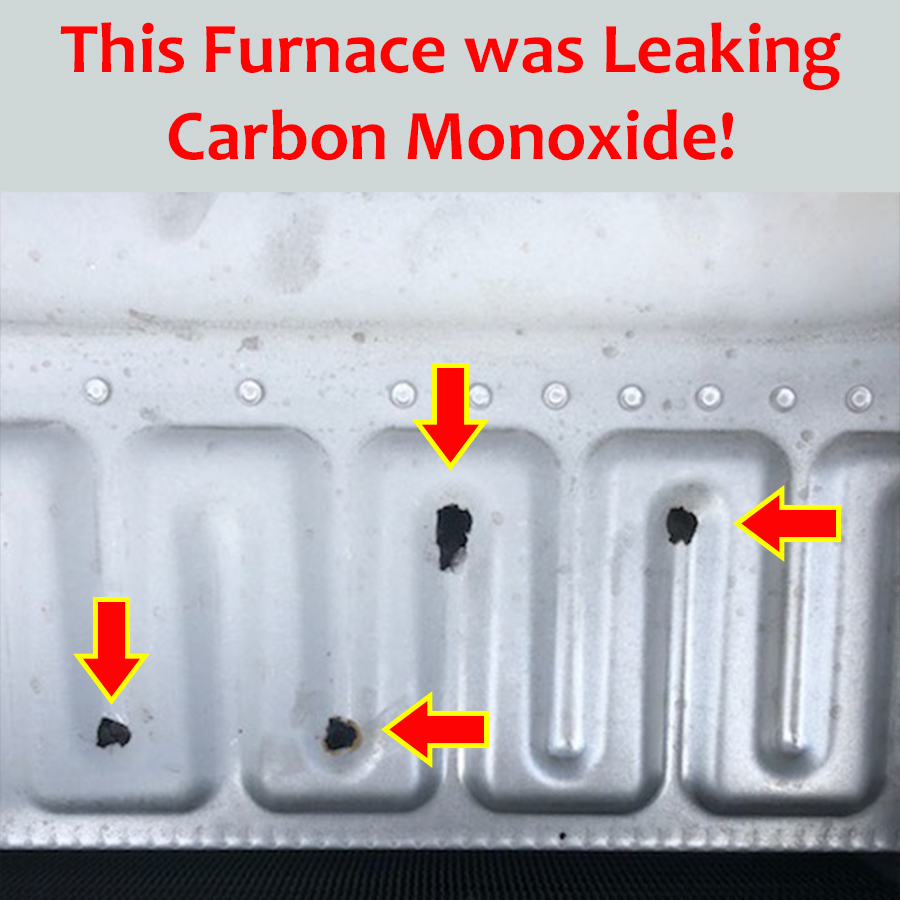Buying a House? 13 Reasons Why You Need an HVAC Inspection
Home >

You’ve found the perfect home and made an offer.
You’re nervous and excited about the next step: getting a home inspection to ensure that your investment is protected. The last thing you want is a surprise that could disrupt the home buying process.
Home inspections are great for revealing large, noticeable issues that may cause costly damage later on, and for revealing things that ought to be replaced immediately.
However, a home inspection is NOT an HVAC inspection!
Most home inspections are conducted visually for parts of the home and property that are viewable and accessible. The internal components of your heating and air conditioning system are not easily viewable, and likely won’t get a deep diagnosis that will reveal weaknesses in your home comfort systems.
Therefore, whether you’re a first time home buyer or a seasoned homeowner already familiar with the home buying process, it’s important not to overlook the most expensive appliance in your home—your HVAC system—when buying.
Not paying enough attention to heating and cooling systems during the home buying process can be a costly and unwelcome mistake. It can rear its ugly head in the form of a sudden system breakdown when your system is under the most stress: on the hottest and coldest days of the year, which leaves the burden of a costly expense on your shoulders when you least expect it and when you’ve just made one of the biggest purchases of your life.
We’ve seen this happen a lot, and it’s most likely to occur in systems that are over 10 years old. Read on to learn how to save thousands on a new heating and cooling system.
Pro Tip:
If the responsibility of system replacement is going to be with the seller, make sure you get a system that MEETS YOUR NEEDS, not their needs!
Why?
The seller wants to earn as much as they can from the sale. They may be incentivized to install cheap, low-end equipment that achieves the bare minimum performance and technically satisfies the agreement. However, without oversight, you may end up with a brand-new system that still won’t meet your needs.
High humidity levels, hot and cold rooms, an undersized or oversized system that can’t keep up, and unnecessarily high energy bills which will continue to cost you money for the long-term are just a few of the things we’ve seen happen.
So, if system replacement becomes a factor in your buying process, work with a qualified HVAC pro to install the home comfort system that satisfies your needs, your wallet, and your peace-of-mind, not the sellers.
If you request an HVAC inspection as part of your buying agreement and something major is wrong with the system, you may be able to negotiate a reduction in price commensurate with the HVAC system repair or installation cost.
Need more convincing?
Here are 13 reasons to get an HVAC inspection in addition to your home inspection.
#1 – A Home Inspection is NOT an HVAC Inspection

When it comes to heating and cooling equipment, the typical home inspector will turn your equipment on to make sure it operates. They don’t test air conditioning systems during the winter or heating systems during the summer because doing so could damage the systems. HVAC equipment is designed to operate during appropriate weather conditions, and operation outside of the appropriate season can also produce false readings.
So, how can you really know what you’re getting?
A basic home inspection will look at your HVAC system for obvious flaws or signs of damage, such as cracked ductwork or dirty filters, but going deep into the system to find safety, efficiency, mechanical or structural weaknesses just isn’t going to happen. Unless you’re lucky enough to use a home inspector who is also an HVAC professional, it’s highly unlikely they’ll discover major issues with your system, even if it appears to be working properly.
Since your HVAC equipment is usually the most expensive appliance in your home and unforeseen problems can disrupt the buying process, or cost you a lot of money when you least expect it, it pays to have an HVAC inspection conducted by a professional.
#2 – Lower Your Energy Bills

Properly maintained heating and cooling systems should provide the comfort you deserve at a price you can afford.
Improperly maintained or neglected systems will result in higher energy bills, shorter equipment lifespan, and reduced ability to deliver adequate comfort. About 50% of a home’s utility costs come from heating and cooling bills. Therefore, you want to make sure your HVAC equipment is in good working order before you buy.
#3 – Avoid Emergency Replacement
Heating and air conditioning systems are generally the most expensive appliance in a home. Therefore, you’ll want to make sure your system is in good working order to avoid costly replacement
#4 – Dirty Filters

Dirty air filters restrict airflow and force heating and cooling systems to work harder than they need to, which stresses the system and can lead to premature breakdown. Think of it like your car’s air filter: the cleaner it is, the better gas mileage you’ll get, and the less stress it puts on the engine.
Air filters ought to be replaced or cleaned regularly, and if your home inspection reveals a dirty filter, it may be an indication that the system you’re about to buy with your home hasn’t been receiving the TLC it should have been.
Dirty air filters can also negatively affect indoor air quality, which is a Top 5 Risk to Public Health, according to the Environmental Protection Agency.
#5 – Ductwork Issues
Did you know that, on average, 30 cents of every $1 spent on heating and cooling a home disappears into thin air due to leaky ducts? Or, that 25% to 60% of conditioned air leaks out and never makes it to its intended rooms?

Leaky ducts can cause varying room temperatures of as much as 10 degrees.
Leaky ducts contribute to rooms that are never quite as cool or warm as you’d like them to be. With all that money going to waste and reducing homeowners’ comfort levels, it’s important to take the condition of your ductwork seriously when buying a house.
Leaky ductwork can also contribute to poor indoor air quality because heating and air conditioning systems can pull air from the dirtiest parts of your home—walls, attics, basements, and garages— through leaks into your breathing air.
Yuck!
As if that wasn’t bad enough, leaky ductwork can also cause moisture problems in basements and crawlspaces.
Create a Safer, Healthier Home

-
Leaks pull mold, dust, and other pollutants into your home causing indoor air quality issues and have potential to create harmful allergy problems.
-
Leaks contribute to safety issues related to backdraft of appliance fumes, auto exhaust, and radon gases being released into your home.
Inspecting ductwork is important, which an HVAC pro can analyze more effectively than a home inspector.
#6 – Venting Exhaust
Combustion equipment can produce waste in the form of carbon monoxide and other contaminants. If your heating and air conditioning systems run on gas or oil, then proper venting is critical to home safety.
Carbon Monoxide (CO) is known as the “silent killer,” and according to the Centers for Disease Control in Atlanta, “every year 600 Americans die due to accidental acute Carbon Monoxide poisoning. Over 20,000 are made ill and treated.”
#7 – Cracked Heat Exchanger
A cracked heat exchanger can leak poisons such as carbon monoxide into your breathing air. State law in New Hampshire (and most other states) requires HVAC companies to condemn furnaces with this type of safety fault because it can result in hospitalization and death.


Unfortunately, it’s unlikely your typical home inspector will be able to properly assess the condition of the heat exchanger when he takes off the main access panel during an inspection, and it’s rarely visible in this scenario.
If the heat exchanger is compromised, it’s usually more cost-effective to replace the entire system.
Why?
Like all technologies, heat exchangers eventually fail. The normal process of expansion and contraction as a heat exchanger heats up and cools down weakens it over the course of its 10-20 year lifespan. Expansion and contraction cause cracks in the metal that leak CO and other contaminants.
Cracks in a heat exchanger usually occur after many years of use, and these systems are often 10-20 years old and due for replacement anyway.
#8 – Dirty Coils
Like dirty air filters, dirty coils on outdoor condensers may be a sign of system neglect. Not only should the coils be cleaned annually, but plants, bushes, and other obstructions should be removed at least one to two feet around the unit so that the unit can pull in enough air.
In fact, just 0.042 inches of dust can result in a 21% decrease in system efficiency!
#9 – Uneven Pad
The pad for your condenser needs to be level; otherwise it reduces the effectiveness of lubrication in the tubing and increases stress in refrigerant lines. Left too long, and this situation can result in a unit that fails prematurely. If the unit isn’t level, it’s time to get an HVAC inspection.
#10 – Missing Parts
Are you buying a foreclosed home or a vacant home? Make sure all the parts are there, and the units are in good working order. Vacant homes can be attractive to thieves. Believe it or not, it happens.
#11 – Clogged Condenser Drains
Condensation collects and is expelled during the air conditioning process, often through a drain hose. If it gets clogged, water can get backed up and cause moisture issues such as mold and mildew, which can negatively affect your indoor air quality.
#12 – Old Equipment & Maintenance History

The average lifespan of heating and cooling equipment is about 10-20 years. A high-quality properly maintained system that’s checked annually and enjoys preventative maintenance will typically last longer than a low-end product that doesn’t get the attention it needs.
If the system in the home you’re buying is more than 10 years old, then it may be time to consider a replacement. Today’s models are vastly more efficient than older models, which means you’re going to pay more than you need to in the form of higher energy bills in your new home. You’ll also have to replace the system eventually. Why not roll that cost into the process of buying a house and avoid the expense entirely?
There’s also the R-22 refrigerant ban to consider.
Basically, the U.S. government has been phasing out the use of R-22—often referred to as “freon”—since 2010. R-22 is a hydrochlorofluorocarbon (HCFC), a chemical that depletes the Earth’s protective ozone layer and contributes to climate change.
R-22 is used in most older air conditioning equipment. This fact is especially relevant for homeowners with an air conditioning system that’s ten years old or more since they most likely use this banned refrigerant, rather than more earth-friendly refrigerants such as R-410A.
If your AC system is more than ten years old, then this article is for you: Refrigerant for Old AC Units was Just Banned! Do YOU Need to Buy New?
#13 – System & Duct Design
How was your HVAC system designed? Is it sized appropriately for your potential new home? Will it meet your comfort needs? Are your ducts insulated? Do they leak?
These are all important questions to ask your home inspector—or better yet, an HVAC pro—to determine what you’re really getting for your money.
Want to learn more about how proper HVAC maintenance affects your comfort and your bank account? Check out the graphic below!
In the meantime, if you have any questions or concerns, please contact us. We’ll be happy to help you out.
CONTACT US TODAY



As Seen & Heard On







Reach Out to Our Team for More Details
Feel free to call Sanford Temperature Control or fill out the online form for more information. You may also get in touch with our team to schedule an appointment. We look forward to hearing from you.

